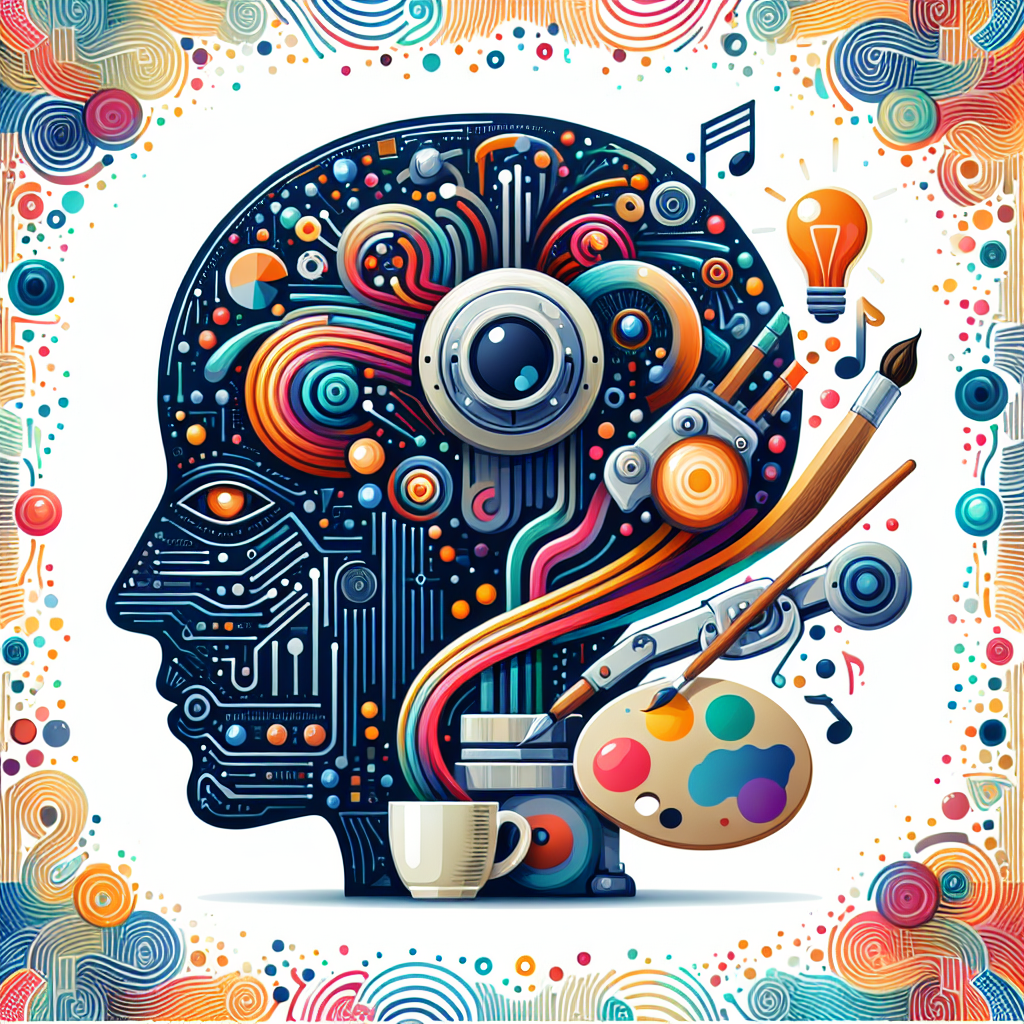Artificial intelligence (AI) has long been associated with logic, algorithms, and problem-solving. However, in recent years, AI has also been making strides in the realm of creativity. From painting to writing music, AI is now being used to create works of art that are indistinguishable from those produced by humans. This has sparked a debate about the role of AI in the creative process and whether machines can truly be creative. In this article, we will explore the ways in which AI is bridging the gap between technology and creativity, as well as address some frequently asked questions about this emerging field.
AI and Creativity: A Brief Overview
Creativity has traditionally been seen as a uniquely human trait, requiring complex cognitive processes such as imagination, intuition, and emotional intelligence. However, advancements in AI technology have challenged this notion by demonstrating that machines can also exhibit creative behavior. AI systems are now capable of generating original ideas, composing music, writing poetry, and even designing fashion.
One of the key breakthroughs in AI creativity is the development of generative adversarial networks (GANs). GANs are a type of neural network that consists of two separate networks – a generator and a discriminator – that work together to produce realistic outputs. The generator creates new content, such as images or music, while the discriminator evaluates the quality of the generated content. Through this feedback loop, the generator learns to produce increasingly realistic and creative outputs.
Another important development in AI creativity is the use of deep learning algorithms, which are capable of analyzing vast amounts of data to identify patterns and generate new ideas. For example, researchers have used deep learning algorithms to create music compositions that mimic the style of classical composers like Bach or Beethoven. These AI-generated compositions have been praised for their complexity and emotional depth, leading some to question whether machines can truly be considered creative.
Bridging the Gap
While AI has made significant strides in the field of creativity, there are still limitations to what machines can achieve. For example, AI systems lack the ability to experience emotions or have personal experiences, which are integral to the creative process. Additionally, AI-generated content is often based on existing data and may lack the originality and spontaneity that define human creativity.
Despite these limitations, AI has the potential to enhance human creativity in a number of ways. For example, AI can be used as a tool to assist artists and designers in the creative process, helping them generate new ideas, experiment with different styles, and overcome creative blocks. AI can also be used to automate repetitive tasks, allowing creatives to focus on more complex and innovative projects.
Furthermore, AI can help democratize creativity by providing access to tools and resources that were previously only available to a select few. For example, AI-powered platforms like Canva and Adobe Spark allow users to create professional-quality designs and graphics with minimal technical skills. Similarly, AI-driven music composition tools like Amper Music and AIVA enable musicians to create original compositions without formal training in music theory.
Overall, the integration of AI and creativity has the potential to revolutionize the way we create and consume art, music, literature, and other forms of creative expression. By leveraging the unique strengths of both humans and machines, we can push the boundaries of what is possible and explore new avenues of artistic innovation.
FAQs
Q: Can AI truly be creative?
A: While AI can generate original ideas and produce works of art, it lacks the capacity for emotional depth and personal experience that are essential to human creativity. However, AI can be a valuable tool for assisting and enhancing human creativity.
Q: Will AI replace human artists and designers?
A: AI is unlikely to replace human artists and designers entirely, as creativity is a complex and deeply personal process. Instead, AI is more likely to augment human creativity by providing new tools and resources for artists and designers to explore.
Q: How can AI be used in the creative process?
A: AI can be used in the creative process in a variety of ways, such as generating ideas, experimenting with different styles, automating repetitive tasks, and providing access to tools and resources. AI can also be used to analyze data and identify patterns that can inspire new creative projects.
Q: What are some examples of AI-generated art?
A: Some examples of AI-generated art include paintings, music compositions, poetry, and fashion designs. For example, Google’s DeepDream algorithm creates psychedelic images, while the music composition tool AIVA produces original compositions in various styles.
Q: What are the ethical implications of AI in creativity?
A: The use of AI in creativity raises ethical questions about authorship, ownership, and the impact on the creative process. For example, who owns the rights to AI-generated art? How does AI influence cultural diversity and artistic expression? These are important questions that need to be addressed as AI continues to play a larger role in the creative process.
In conclusion, AI has the potential to revolutionize the way we create and consume art, music, literature, and other forms of creative expression. While AI may never truly replicate the complexity and depth of human creativity, it can be a valuable tool for assisting and enhancing the creative process. By bridging the gap between technology and creativity, we can unlock new possibilities and push the boundaries of what is possible in the world of art and design.

